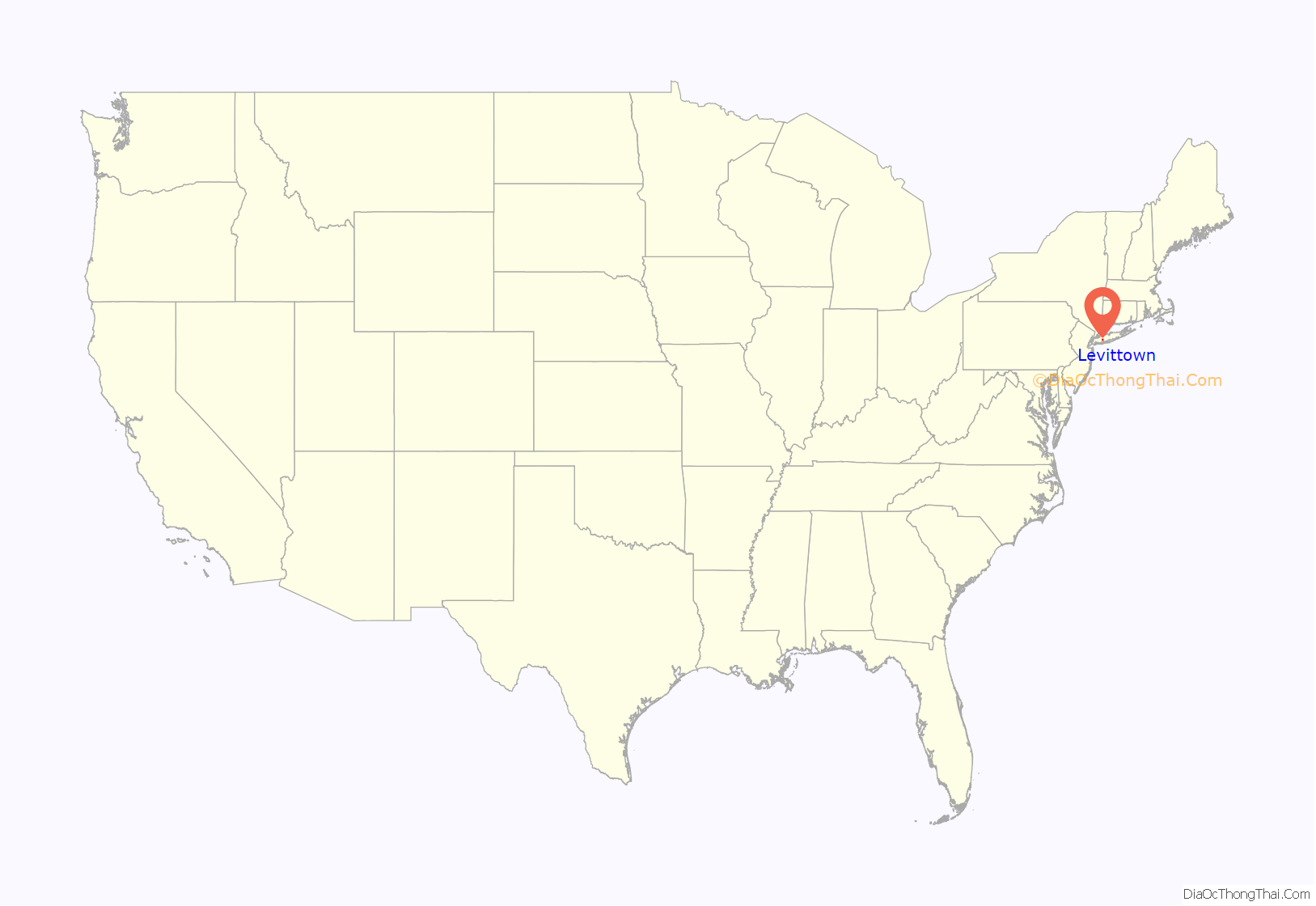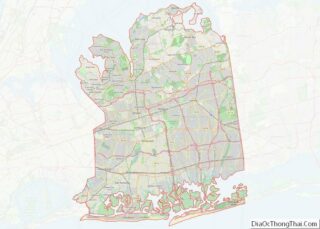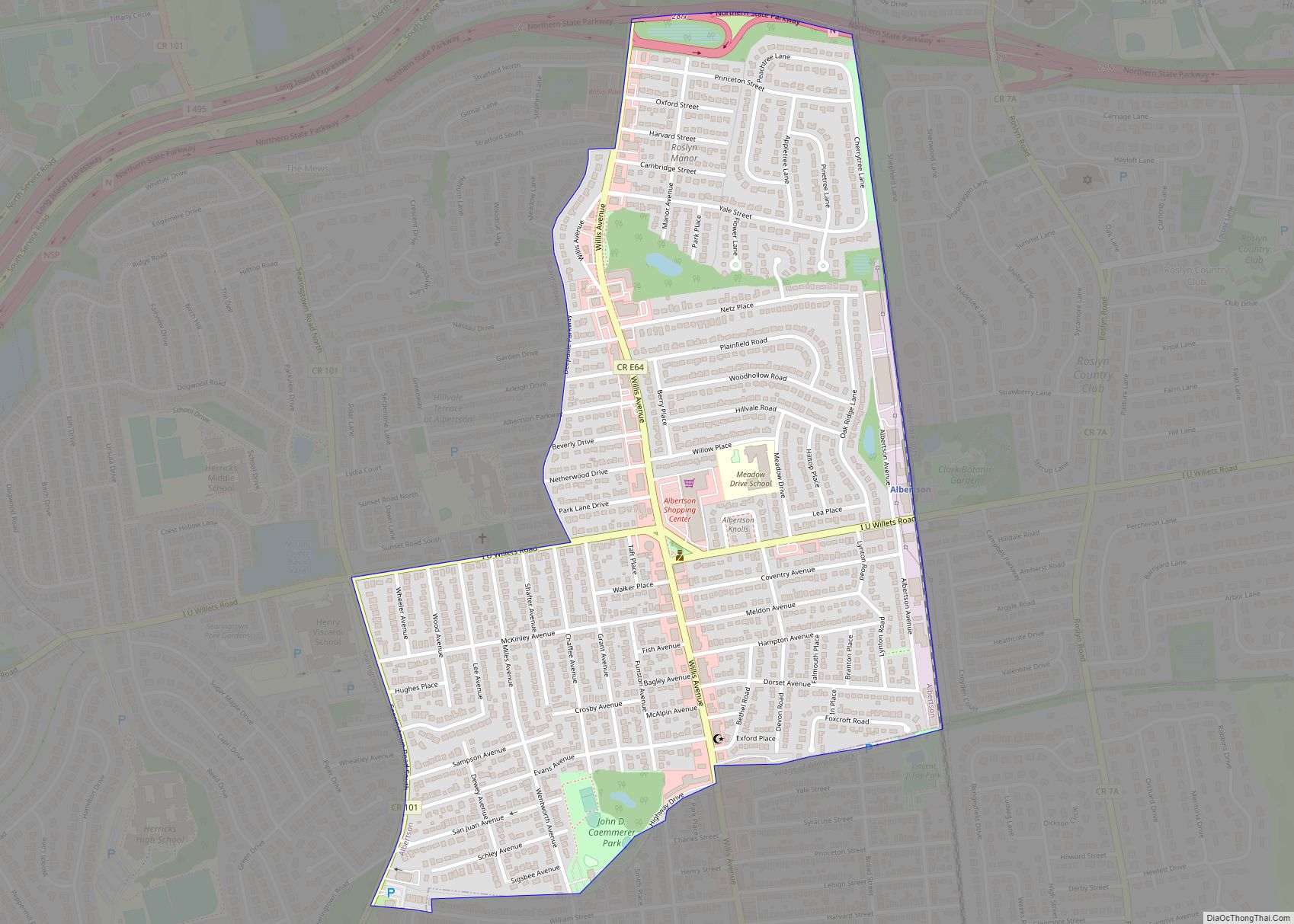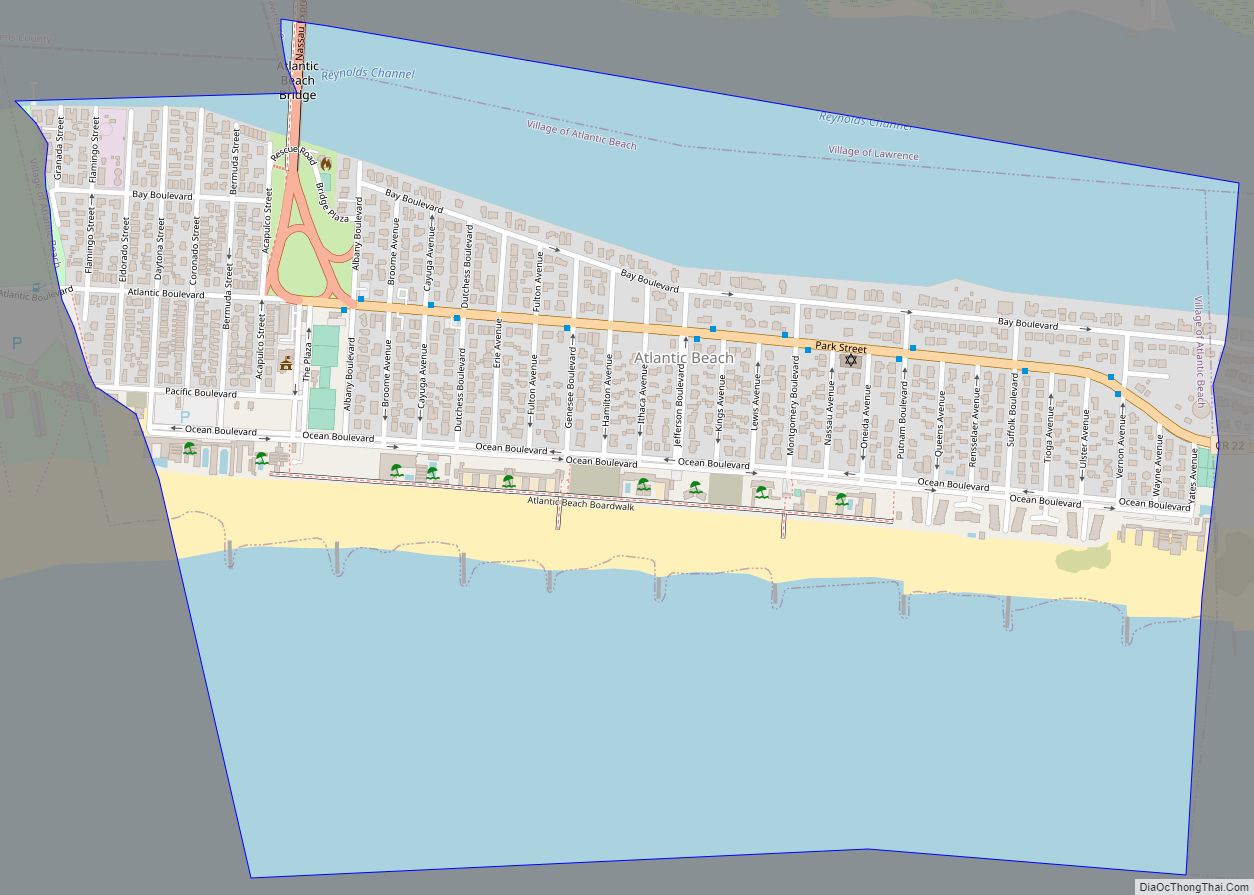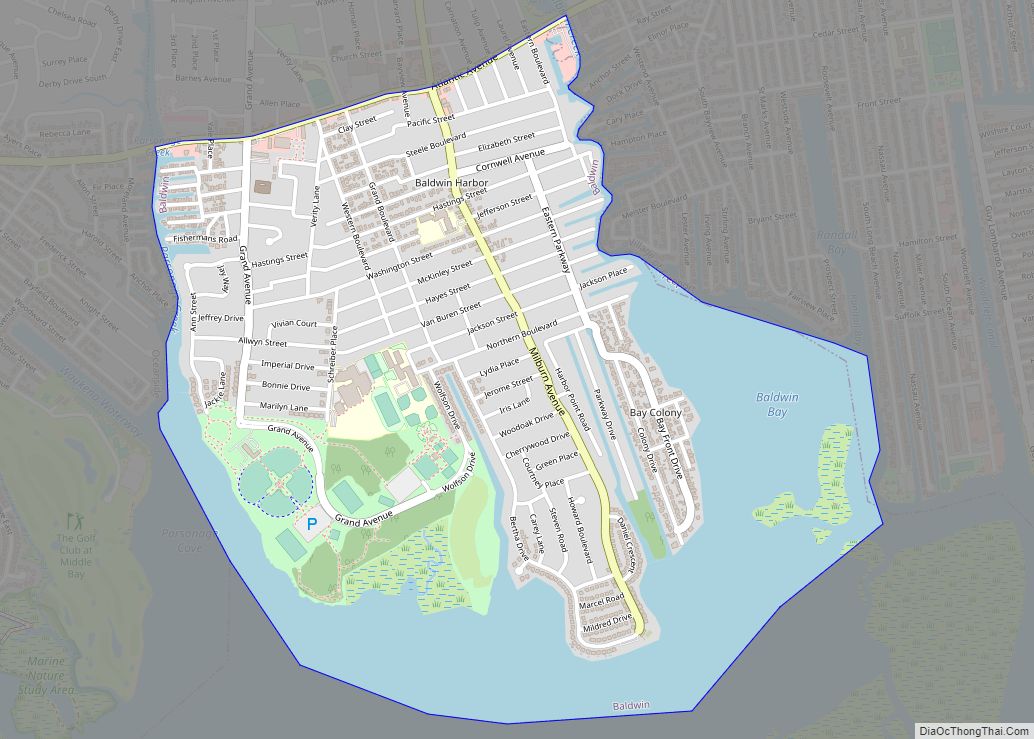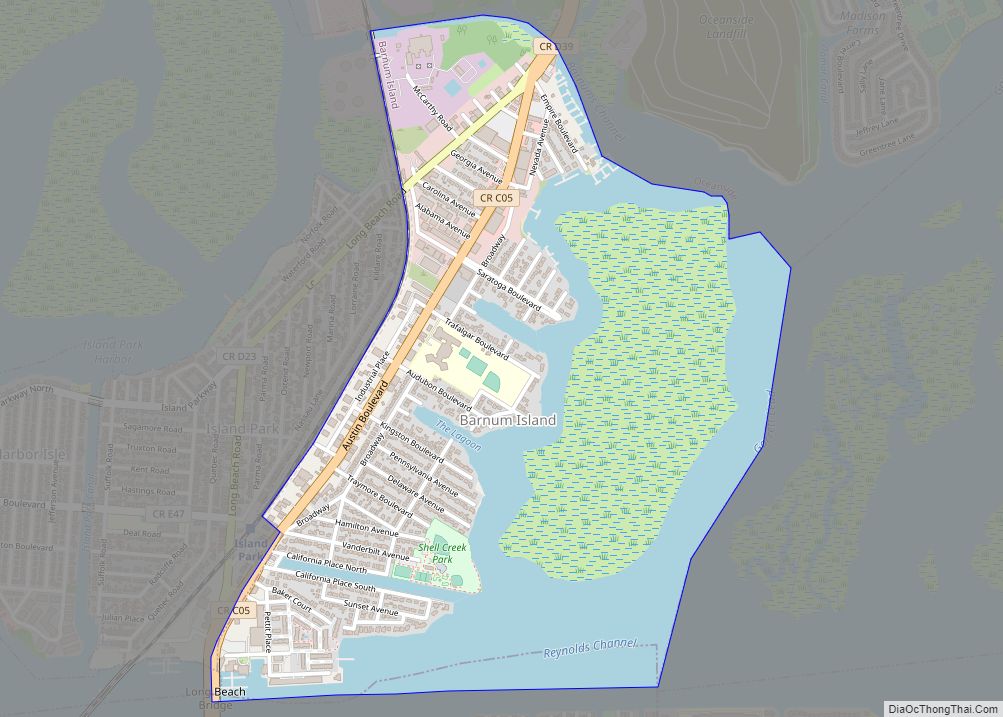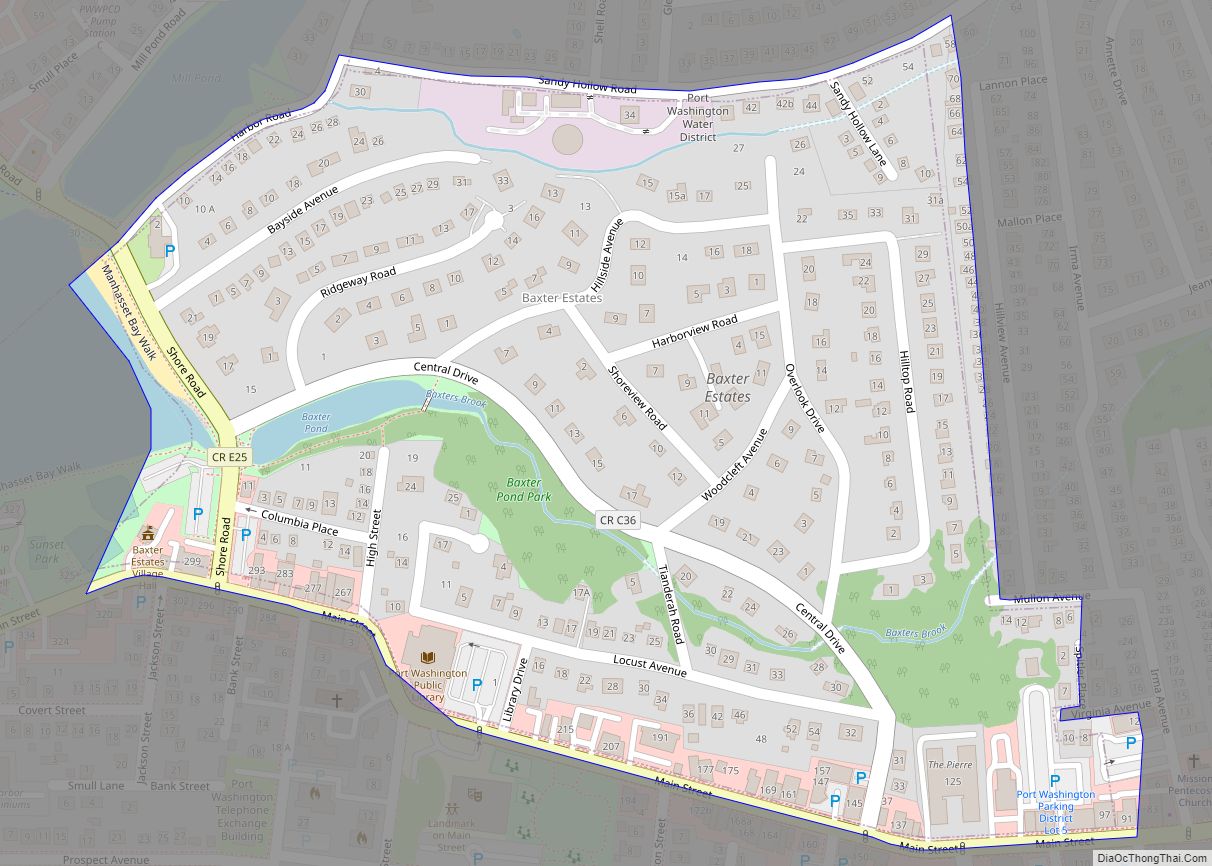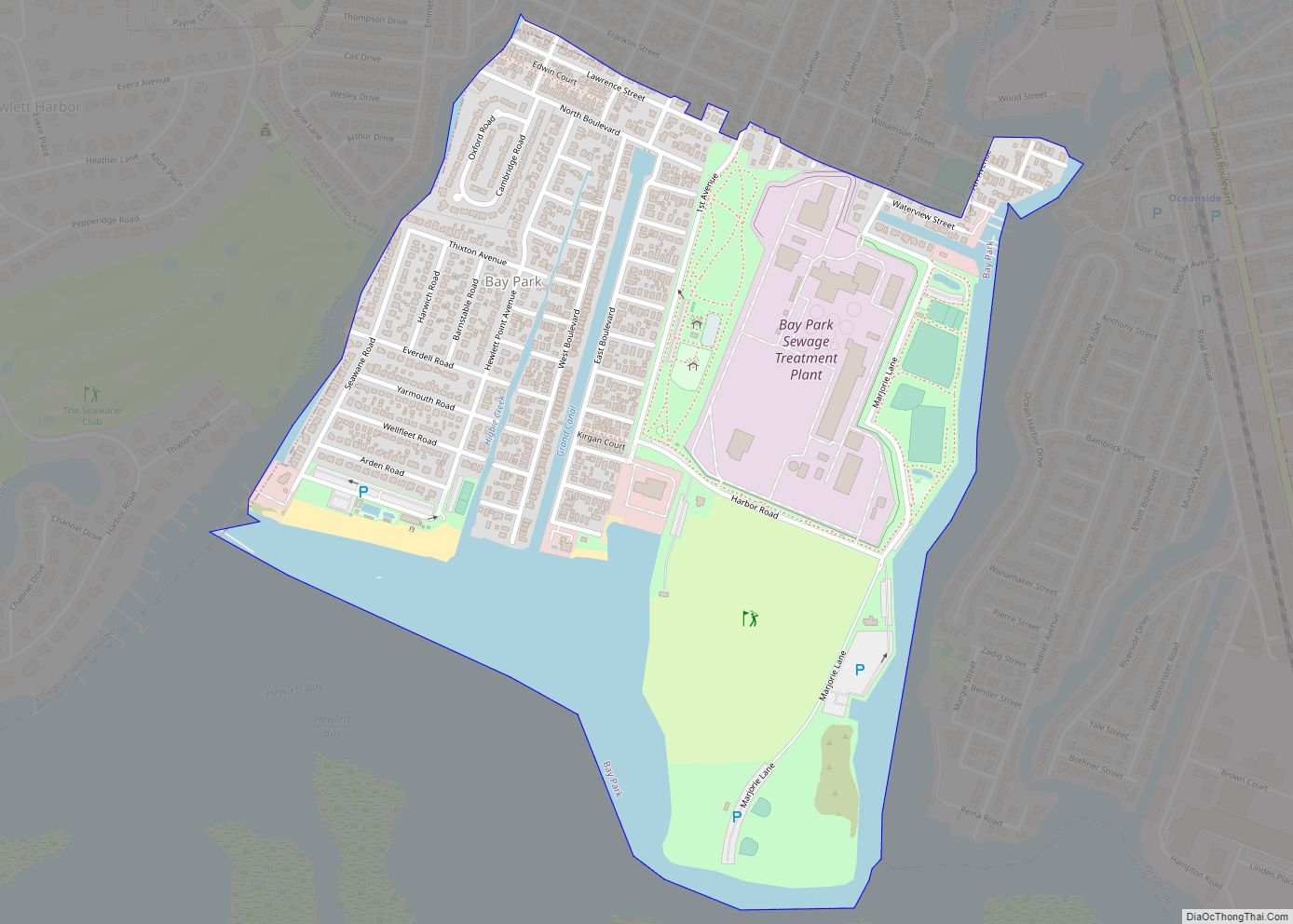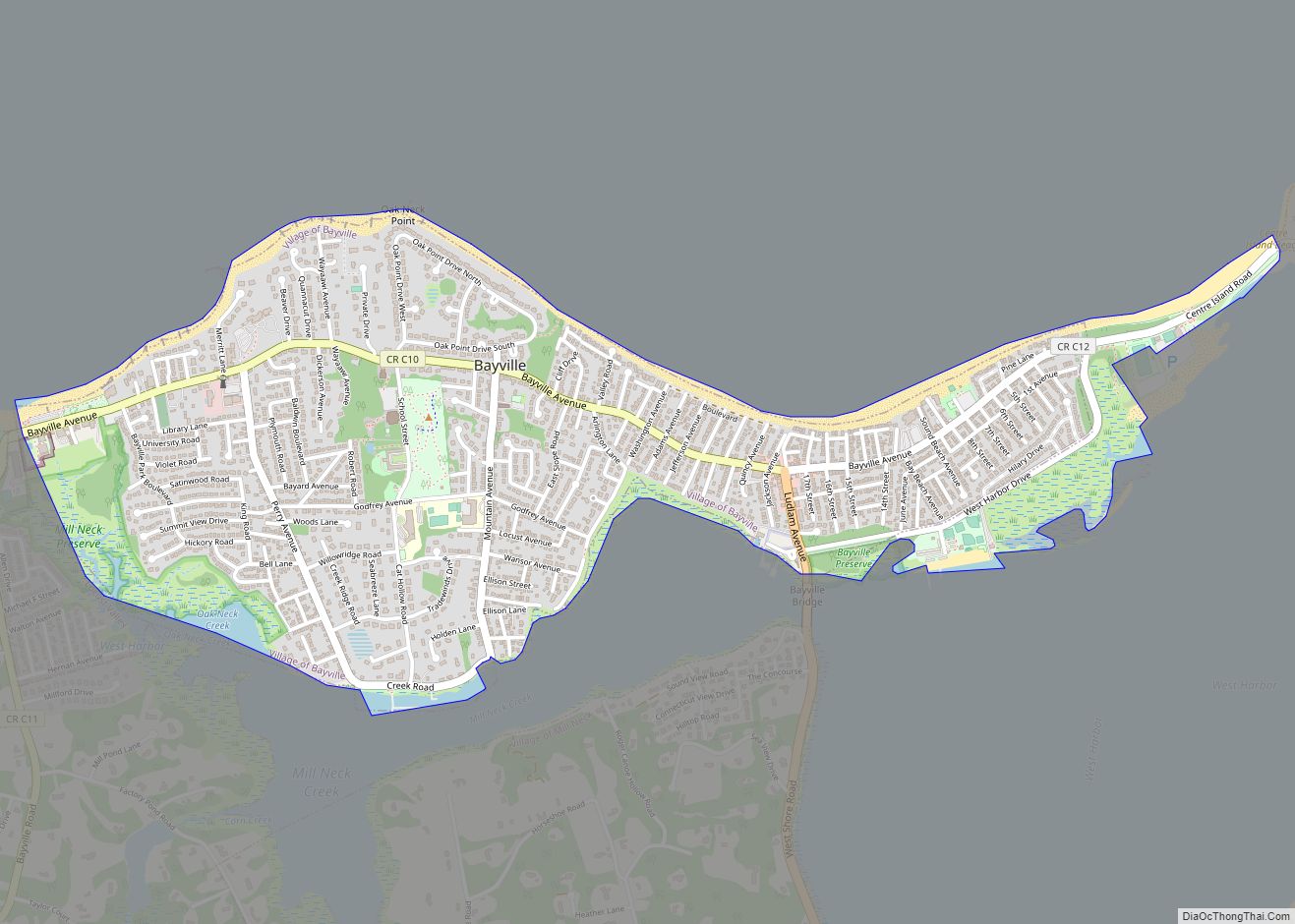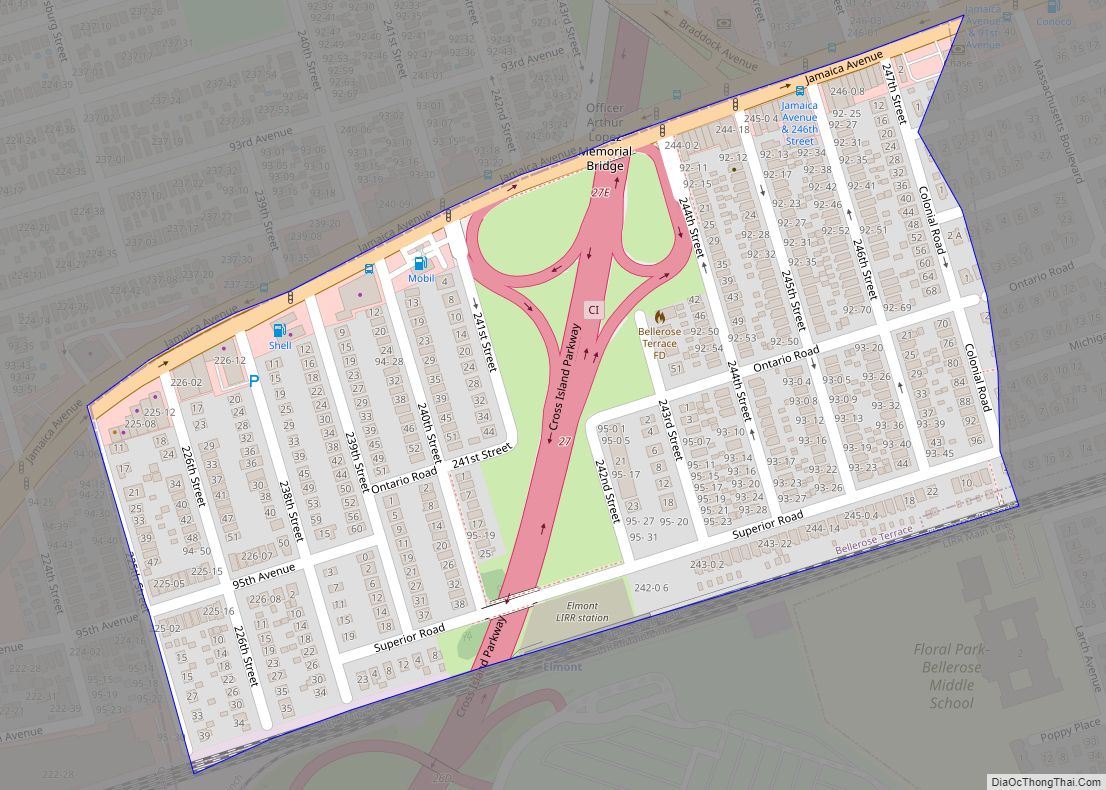Levittown is a hamlet and census-designated place (CDP) in the Town of Hempstead in Nassau County, on Long Island, in New York. It is located halfway between the villages of Hempstead and Farmingdale. As of the 2010 census, the CDP had a total population of 51,881, making it the most populous CDP in Nassau County and the second most populous CDP on Long Island, behind only Brentwood.
Levittown gets its name from its builder, the firm of Levitt & Sons, Inc. founded by Abraham Levitt on August 2, 1929, which built the district as a planned community for returning World War II veterans between 1947 and 1951. Sons William and Alfred served as the company’s president and chief architect and planner, respectively. Levittown was the first truly mass-produced suburb and is widely regarded as the archetype for postwar suburbs throughout the country. William Levitt, who assumed control of Levitt & Sons in 1954, is considered the father of modern suburbia in the United States.
There have been multiple proposals in the past to incorporate Levittown either as a village or as the third city in Nassau County.
| Name: | Levittown CDP |
|---|---|
| LSAD Code: | 57 |
| LSAD Description: | CDP (suffix) |
| State: | New York |
| County: | Nassau County |
| Elevation: | 82 ft (25 m) |
| Total Area: | 6.84 sq mi (17.71 km²) |
| Land Area: | 6.81 sq mi (17.64 km²) |
| Water Area: | 0.03 sq mi (0.06 km²) |
| Total Population: | 51,758 |
| Population Density: | 7,598.06/sq mi (2,933.51/km²) |
| ZIP code: | 11756 |
| Area code: | 516 |
| FIPS code: | 3642081 |
| GNISfeature ID: | 0955234 |
| Website: | https://www.levittown.li |
Online Interactive Map
Click on ![]() to view map in "full screen" mode.
to view map in "full screen" mode.
Levittown location map. Where is Levittown CDP?
History
Overview
The building firm, Levitt & Sons, headed by Abraham Levitt and his two sons, William and Alfred, built four planned communities called “Levittown”, in New York, Pennsylvania, New Jersey, and Puerto Rico; the Levittown in New York was the first. Additionally, Levitt & Sons’ designs are featured prominently in the older portion of Buffalo Grove, Illinois; Vernon Hills, Illinois; Willingboro Township, New Jersey; the Belair section of Bowie, Maryland; and the Greenbriar section of Fairfax, Virginia.
The Levitt firm began before World War II, as a builder of custom homes in upper middle-class communities on Long Island. During the war, however, the home building industry languished under a general embargo on private use of scarce raw materials. William “Bill” Levitt served in the Navy in the Seabees – the service’s construction battalions – and developed expertise in the mass-produced building of military housing using uniform and interchangeable parts. He was insistent that a postwar building boom would require similar mass-produced housing, and was able to purchase options on large swaths of onion and potato fields in undeveloped sections of Long Island.
Returning to the firm after war’s end, Bill Levitt persuaded his father and brother to embrace the utilitarian system of construction he had learned in the Navy. With his brother, Alfred, who was an architect, he designed a small one-floor house with an unfinished “expansion attic” that could be rapidly constructed and as rapidly rented to returning GIs and their young families. Levitt & Sons built the community with an eye towards speed, efficiency, and cost-effective construction; these methods led to a production rate of 30 houses a day by July 1948. They used pre-cut lumber and nails shipped from their own factories in Blue Lake, California, and built on concrete slabs, as they had done in a previous planned community in Norfolk, Virginia. This necessitated negotiating a change in the building code which, prior to the building of this community, did not permit concrete slabs. Given the urgent need for housing in the region, the town agreed. Levitt & Sons also controversially utilized non-union contractors in the project, a move which provoked picket lines. On the other hand, they paid their workers very well and offered all kinds of incentives that allowed them to earn extra money, so that they often could earn twice as much a week as elsewhere. The company also cut out middlemen and purchased many items, including lumber and televisions, directly from manufacturers. The building of every house was reduced to 26 steps, with sub-contractors responsible for each step. His mass production of thousands of houses at virtually the same time allowed Levitt to sell them, with kitchens fully stocked with modern appliances, and a television in the living room, for as little as $8,000 each (equal to $97,085 today), which, with the G.I. Bill and federal housing subsidies, reduced the up-front cost of a house to many buyers to around $400 (equal to $4,854 today).
The planned 2,000 home rental community was quickly successful, with the New York Herald Tribune reporting that half of the properties had been rented within two days of the community being announced on May 7, 1947. As demand continued, exceeding availability, the Levitts expanded their project with 4,000 more homes, as well as community services, including schools and postal delivery. With the full implementation of federal government supports for housing, administered under the Federal Housing Administration (FHA), the Levitt firm switched from rental to sale of their houses, offering ownership on a 30-year mortgage with no down payment and monthly costs the same as rental. The resulting surge in demand pressed the firm to further expand its development, which changed its name from Island Trees to Levittown shortly thereafter.
Levittown was designed to provide a large amount of housing at a time when there was a high demand for affordable family homes. This suburban development would become a symbol of the “American Dream” as it allowed thousands of families to become home owners.
In 1952, Carl T. Sigman, who was running as the Democratic candidate for County Executive, stated that he felt it would be wise for Levittown to incorporate itself as a city. If successful, the never-realized Incorporated City of Levittown would have been the third city to incorporate within Nassau County, joining Glen Cove and Long Beach.
Previously, locals had proposed incorporating their hamlet as a village.
Discriminatory practices
As well as a symbol of the American Dream, Levittown would also become a symbol of racial segregation in the United States, due to Clause 25 of the standard lease agreement signed by the first residents of Levittown, who had an option to buy their homes. This “restrictive covenant” stated in capital letters and bold type that the house could not “be used or occupied by any person other than members of the Caucasian race.”
Such discriminatory housing standards were consistent with government policies of the time. The Federal Housing Administration allowed developers to justify segregation within public housing. The FHA offered mortgages only to non-mixed developments which discouraged developers from creating racially integrated housing. Before the sale of Levittown homes began, the sales agents were aware that no applications from black families would be accepted. As a result, American veterans who wished to purchase a home in Levittown were unable to do so if they were black.
William Levitt attempted to justify their decision to only sell homes to white families by saying that it was in the best interest for business. He claimed their actions were not discriminatory but intended to maintain the value of their properties. The company explained that it was not possible to reduce racial segregation while they were attempting to reduce the housing shortage. Levitt said “As a Jew, I have no room in my heart for racial prejudice. But the plain fact is that most whites prefer not to live in mixed communities. This attitude may be wrong morally, and someday it may change. I hope it will.” The Levitts explained that they would open up applications to blacks after they had sold as many homes to white people as possible. They believed that potential white buyers would not want to buy a house in Levittown if they were aware they would have black neighbors.
Though the Levitts were Jewish, they did not wish to sell homes to Jewish families either; despite this, by 1960, although it was still a completely “white” suburb, the population of Levittown was roughly a third Jewish, with the remainder about a third Roman Catholic, and a third Protestant.
An opposition group was formed, the Committee to End Discrimination in Levittown, to protest the restricted sale of Levittown homes, and to push for an integrated community. In 1948 the United States Supreme Court, in Shelley v. Kraemer, declared that property deeds stipulating racial segregation were “unenforceable as law and contrary to public policy”. Only well after the 1954 racial integration decisions, including Brown v. Board of Education, was Levittown racially integrated, and even as late as the 1990 census only a tiny fraction of the community was non-white, a condition that still exists.
Spread of the planned community
While the Levitts are generally credited with designing a postwar “planned community,” with common public amenities such as swimming pools and community centers, they were quick to release these high-maintenance, low-profit elements to the surrounding towns; the development sprawled across municipal boundaries, causing legal and administrative difficulties and requiring major initiatives within those existing municipalities to provide for and fund schools, sewage and water systems, and other infrastructure elements.
In 1949, Levitt and Sons changed focus, unveiling a new plan which it termed a “ranch” house. Larger, 32 by 25 feet (9.8 by 7.6 m), and more modern, these homes were only offered for sale, with a planned price of $7,990 (equal to $90,997 today). The ranch homes were similar to the rental properties in that they were built on concrete slabs, included an expandable attic but no garage, and were heated with hot-water radiant heating pipes. Five models were offered that were effectively identical with differences in details such as exterior color and window placement. Again, demand was high, requiring that the purchasing process be streamlined as the assembly process had been, reaching the point that a buyer could walk through the process of selecting a house through contracting for its purchase in three minutes. This ranch model was altered in 1950 to include a carport and a built-in television. In 1951, a partially finished attic was added to the design.
Levittown proved successful. By 1951, it and surrounding regions included 17,447 homes constructed by Levitt & Sons.
On Friday, November 9, 2007, Levitt & Sons of Fort Lauderdale became the nation’s largest builder to file for bankruptcy as the housing market boom of the early 21st century continued to crumble.
Timeline
- February 12, 1664: Jerusalem Purchase between John Seaman and Takapausha of the Massapequan Indians whereupon the English were granted rights to settle in on lands that now comprise southern and easternmost Levittown (south of Hempstead Tpke.), northern and eastern Wantagh, and most of Seaford. As Seaman established his farm, Cherrywood, two years later, near the current location of Salk Middle School and MacArthur High School, he was the first European to live in what’s now Levittown. This is the start of the use of the word “Jerusalem” to describe the aforementioned areas.
- March 22, 1747: Land deed between the Seaman and Weeks families first to mention the Island of Trees endowing the general area of northern Levittown with the name “Island Trees”.
- March 1, 1837: Rail service arrives at Hicksville under the supervision of Valentine Hicks. The ensuing influx of German immigrant farmers and artisans opens the future Levittown area up to potato farming and other forms of development.
- February 11, 1907: William Levitt born to Abraham Levitt and Pauline Biederman Levitt in Brooklyn.
- May 21, 1947: Local governing board approves of the construction of a community that would become Levittown.
- October 1, 1947: Levittown’s official beginning as a suburban entity with the first three hundred families – beginning with the Bladykas family – moving into their brand-new Levitt & Sons homes.
- January 1, 1948: The Jerusalem/Island Trees area officially named “Levittown”.
Levittown Road Map
Levittown city Satellite Map
Geography
According to the U.S. Census Bureau, the CDP has a total area of 6.9 square miles (17.8 km), all land. It does not conform to the U.S. Postal Service boundaries nor to the extent of the development built by Levitt & Sons; it also includes areas built by other developers.
Levittown, New York, is an unincorporated area in Nassau County, New York. It can be defined in three overlapping but non-conforming ways. The most common use is Levittown as defined by the United States Postal Service’s Zip Code 11756. Another definition is the extent of the Levitt & Sons development built from 1947 to 1951. A third is the Census Designated Place (CDP) called Levittown as defined by the United States Census Bureau.
The United States Postal Service ZIP code called Levittown, New York, is 11756 and what is most commonly used to mean Levittown, New York. It does not include all the houses built in this area by Levitt & Sons and it does include houses built by other developers. The actual Levitt built development sprawls over three other postal zones, Wantagh NY (11793) and Westbury, NY (11590) in the Town of Hempstead, and Hicksville, NY (11801) in the Town of Oyster Bay.
Climate
Levittown has a hot-summer humid continental climate (Dfa) and average monthly temperatures in the central CDP in the vicinity of Hempstead Turnpike (New York Route 24) and Jerusalem Avenue range from 31.6 °F (−0.2 °C) in January to 74.5 °F (23.6 °C) in July. The hardiness zone is borderline between 7a and 7b, meaning that the average annual absolute minimum temperature is approximately 5 °F (−15 °C).
See also
Map of New York State and its subdivision:- Albany
- Allegany
- Bronx
- Broome
- Cattaraugus
- Cayuga
- Chautauqua
- Chemung
- Chenango
- Clinton
- Columbia
- Cortland
- Delaware
- Dutchess
- Erie
- Essex
- Franklin
- Fulton
- Genesee
- Greene
- Hamilton
- Herkimer
- Jefferson
- Kings
- Lake Ontario
- Lewis
- Livingston
- Madison
- Monroe
- Montgomery
- Nassau
- New York
- Niagara
- Oneida
- Onondaga
- Ontario
- Orange
- Orleans
- Oswego
- Otsego
- Putnam
- Queens
- Rensselaer
- Richmond
- Rockland
- Saint Lawrence
- Saratoga
- Schenectady
- Schoharie
- Schuyler
- Seneca
- Steuben
- Suffolk
- Sullivan
- Tioga
- Tompkins
- Ulster
- Warren
- Washington
- Wayne
- Westchester
- Wyoming
- Yates
- Alabama
- Alaska
- Arizona
- Arkansas
- California
- Colorado
- Connecticut
- Delaware
- District of Columbia
- Florida
- Georgia
- Hawaii
- Idaho
- Illinois
- Indiana
- Iowa
- Kansas
- Kentucky
- Louisiana
- Maine
- Maryland
- Massachusetts
- Michigan
- Minnesota
- Mississippi
- Missouri
- Montana
- Nebraska
- Nevada
- New Hampshire
- New Jersey
- New Mexico
- New York
- North Carolina
- North Dakota
- Ohio
- Oklahoma
- Oregon
- Pennsylvania
- Rhode Island
- South Carolina
- South Dakota
- Tennessee
- Texas
- Utah
- Vermont
- Virginia
- Washington
- West Virginia
- Wisconsin
- Wyoming
